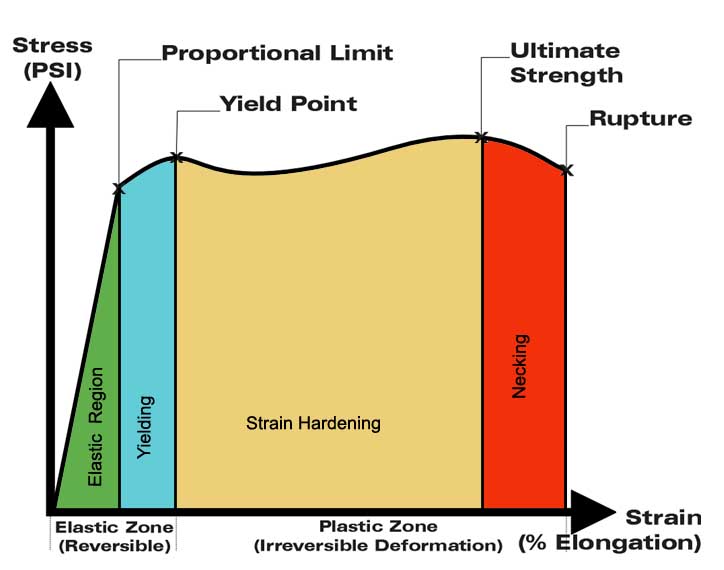Civil Engineering ► Engineering Materials ► Strength of Materials
Strength of Materials
Analysis of internal forces in bodies
This procedure consists of finding out the effect of:
- Axial loadings
- Twisting
- Bending
- Combinations of axial, twisting and bending loadings.
Definition
It is the combination of physical, mathematical, and computer laws and techniques to predict the behavior of a solid materials that are subjected to mechanical or thermal loadings. It is the branch of mechanics that deals with the behavior of solid matter under external actions. The external actions may be:
- External Force
- Temperature Change
- Displacement
Applications of Solid Mechanics
This field has a wide range of applications, laws and concepts of solid mechanics are used:
- In Civil Engineering to design foundations and structures
- In Geo-Mechanics to model shape of planets, tectonics and predict earthquakes
- In Mechanical Engineering to design load bearing components for vehicles, power generation and transmission
SOME IMPORTANT TERMINOLOGIES
Stress
When an external force is applied on a body, it undergoes deformation which is resisted by the body. The magnitude of the resisting force is numerically equal to the applied force. This internal resisting force per unit area of the body is known as stress.
Stress = Resistive Force/Area
In equation form: s = P/A,
Units are: N/m2, kN/m2 MPa (Mega Pascal), Psi (lb/in2), psf (lb/ft2), Ksi (kips/in2), ksf (kips/ft2)
Strain
When a body is subjected to an external force, there is some change of dimension in the body. Numerically the strain is equal to the ratio of change in length to the original length of the body.
Strain = Change in length/Original length
In equation form: e = dL/L
Units: m/m, mm/m, In/in, in/ft
Shear Stress(t) and Shear Strain
The two equal and opposite forces act tangentially on any cross sectional plane of the body tending to slide one part of the body over the other part .The stress induced is called shear stress and the corresponding strain is known as shear strain.
.The stress induced is called shear stress and the corresponding strain is known as shear strain.
Elastic Limit:
The maximum stress that can be applied to a metal without producing permanent deformation is known as Elastic Limit. When stress is applied on a body its dimensions change, these changes can be reversed if the stress applied do not cross a certain limit. This certain limit within which the material when unloaded will re-gain its original dimensions is known as Elastic Limit. Beyond the elastic limit the changes will be permanent and cannot be reversed without an external force. Brittle materials tend to break at or shortly past their elastic limit, while ductile materials deform at stress levels beyond their elastic limit.
Hooke’s law
This law states that when a material is loaded, within its elastic limit, the stress is directly proportional to the strain.
 To view animation of Stress Strain Relationship Click Here
To view animation of Stress Strain Relationship Click Here
s = Ee
E = s/e
Its unit is same as that of Stress
Where,
E is Young’s modulus
s is Stress
e is Strain
Yield Point or Yield Stress
It is the lowest stress in a material at which the material begins to exhibit plastic properties. Beyond this point an increase in strain occurs without an increase in stress which is called Yielding.
Ultimate Strength
It is the maximum stress that a material can withstand while being stretched or pulled before necking
Strain Hardening
It is the strengthening of a metal by plastic deformation because of dislocation(irregular) movements within the crystal structure of the material. Any material with a reasonably high melting point such as metals and alloys can be strengthened by this method.

